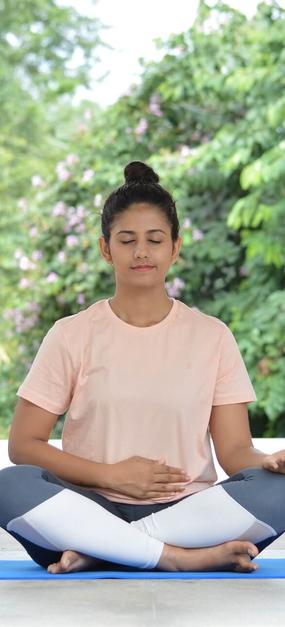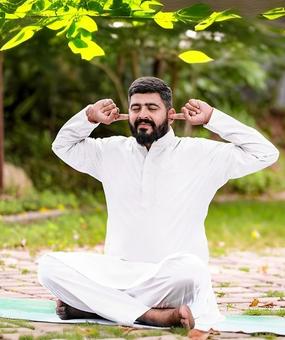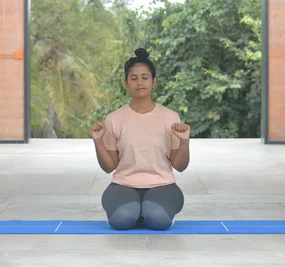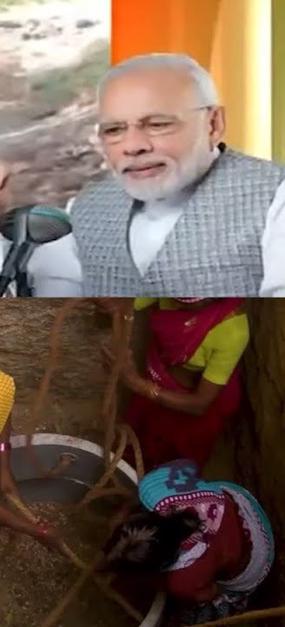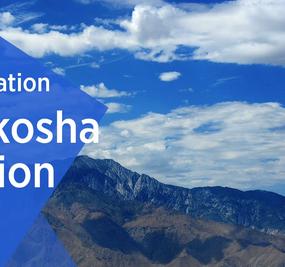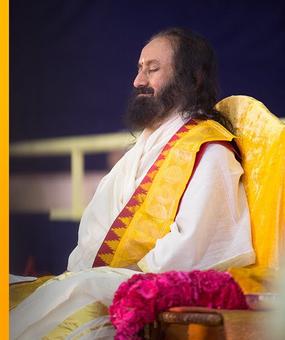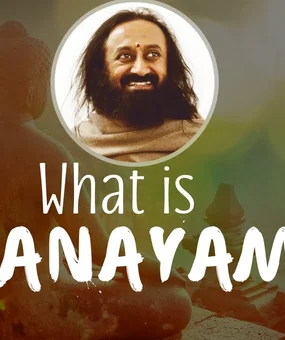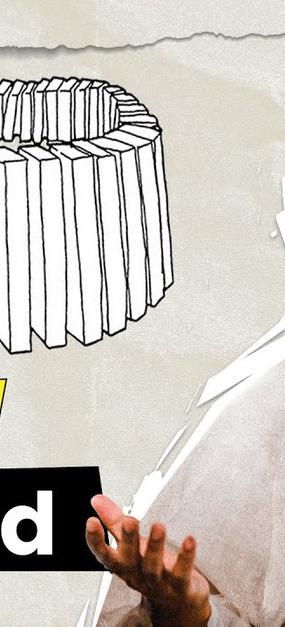“Ujjayi” (pronounced oo-jai) comes from the Sanskrit prefix “ud” (उद्) and the root “ji” (जि). The sanskrit word “Ujji” (उज्जि), means “to be victorious”. “Ud” means “bondage” or “binding” as well as “upward” and “expanding.” It suggests a sense of power and upliftment. ‘Jaya’ means victory and success or “to conquer” or “acquire by conquest”. Ujjayi (उज्जायी) means “one who is victorious”. Ujjayi breath means “breath of victory”.
The reason this is called the victorious breath is that the expansion in the belly and chest during this type of breath perks up one’s confidence in a way that is reminiscent of a victorious warrior. It can also mean “to gain mastery”. At a deeper or more spiritual level, Ujjayi pranayama is about achieving freedom from bondage.
In Yoga, Ujjayi breathing is sometimes also called “the ocean breath”, as the movement of air in the glottis (throat) resembles the sounds of waves of the ocean. A technique that builds heat in the body and relaxes the mind, this breath suits students of all levels—from beginner to advanced. It enhances, empowers and deepens Hatha Yoga practice.
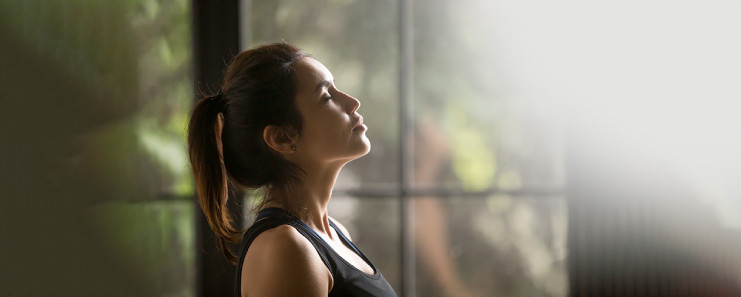
How to generate Ujjayi breath
To create the Ujjayi sound or Ujjayi breath, one can constrict the back of the throat, similar to the constriction made when speaking in a whisper. Therefore, it is an audible breath that is often compared to the sound of the ocean. Although there is a constriction of the throat, the Ujjayi breath flows in and out through the nostrils, with the lips remaining gently closed. The breath should be both long (dirga) and smooth (suksma), allowing the air to reach all the cells in your lungs. As you inhale, your lungs will expand to the side of your waist, to your back, and all the way to your clavicule (collar bone). It will gently massage your internal organs and bring a lot more oxygen and prana into your system. In the beginning, it may seem like a lot of work, but eventually it should become effortless.
Whether breathing normally or in Ujjayi, it is important that the inhalation and exhalation are slow, soft, deep, and long without any tension in the throat muscles. Tension, in any form, might have a contrary impact. It is best not to use any force. Let it come as naturally as possible.
How to practice Ujjayi Pranayama
Ujjayi is one of the important pranayamas described in Hatha Yoga Pradipika, the classical Yoga text. Unlike some other forms of pranayama, which are typically practiced in a seated position, you could use Ujjayi breath with your asana practice as well. It allows more prana, life force, to enter our system and helps to overcome fatigue, stress and negativity. When we use this breath during asana practice, it can make us feel like calm, focused, fierce warriors on our mats. Take every breath with reverence and welcome it as an honored guest.
When practiced as a pranayama, Ujjayi breath is used in three different stages and with three different hand positions to direct the prana (life force energy) to the lower lobes, middle lobes and upper lobes of the lungs, expanding and using both lungs fully.
With just five minutes of practice, you will begin to notice the difference; you’ll feel so very refreshed and relaxed. Learn this three-stage pranayama in the Online Meditation & Breath Workshop.
Ujjayi Pranayama during Hatha Yoga practice
This classic breath is very popular among both Hatha Yoga and Vinyasa Yoga Class. If you are a beginner, it is recommended to use normal breaths during asana practice. As you progress, Ujjayi breathing can have a transformative effect on your asana practice and take it to the next level.
- It allows us to use full, deep breaths during the challenges of physical practice. Honor every breath and enjoy the quality that it brings to your practice.
- The steadiness, sound, and depth of the Ujjayi breath helps to link the mind, body, and spirit to the present moment. This unification adds richness and depth to your practice and helps to cultivate presence and awareness.
- This breath raises your yoga practice to a higher level as you learn to breathe with a sense of honor and reverence for your breath and body
- It helps you stay focused and centered as you flow from one posture to the next.
- It improves stability in your asana practice. Becoming absorbed in Ujjayi allows the practitioner to remain in poses for longer periods of time.
- Ujjayi breathing instills endurance and imparts a meditative quality to your flowing practice by bringing in and maintaining a rhythm.
- It diminishes distractions and allows the practitioner to remain self-aware and grounded in the practice.
- It prepares the body for the asana practice by building internal heat. This heat makes stretching safer while cleansing the inner organs of any accumulated toxins.
- This breath releases tight areas of the body.
- It helps you to let go and surrender into a resting posture with its slow and steady rhythm. It also fosters a profound state of calmness and relaxation in the body and mind.

Benefits of Ujjayi Pranayama
Scientific studies show that Ujjayi has a balancing influence on the entire cardiorespiratory and nervous system. It releases feelings of stress, irritation, and frustration, and helps calm the mind and body. With Ujjayi, there are so many benefits, providing immense value to a simple practice. Here are a few benefits you may enjoy as a result of practicing Ujjayi breath:
- Slows the pace of the breath, which is said to improve longevity
- Cleanses and refreshes the nadis (subtle energy channels of the body)
- Infuses the mind-body with fresh prana (vital life force)
- Promotes mental clarity and focus
- Boosts the immune system
- Soothes and rejuvenates the nervous system
- Promotes sound sleep, controls snoring
- Helps in thyroid related problems, helps control high blood pressure and heart related discomforts
- Improves voice quality of singers
Ujjayi breath for spiritual growth
Ujjayi breath encourages the movement of energy spontaneously and naturally from the practitioner’s root center to the crown. The Ujjayi breath is a full body energetic experience that passes through the sushumna nadi, or the central channel of energy that runs through the spine.
The heat generated through the Ujjayi breathing clears and unblocks the stagnated Sushumna nadi, awakening it so that prana begins to flow smoothly.
Ujjayi breathing is also an effective tool of pratyahara (sense withdrawal). The whispering sound becomes an auditory cue, which anchors our attention and thus, makes breath the heart of our practice. As we focus on the sound of our breath (nadanusandhana), our practice easily turns into a dharana, and that can progress into effortless meditation.
Ujjayi breath for athletes
Ujjayi is also useful when you’re doing aerobic exercise such as running or cycling. In fact, some Olympic athletes have introduced Ujjayi into their training routines to improve their respiratory efficiency, and to relieve their pre-race anxiety. Experiment with this breathing technique when you’re working out and see how it helps you.
Ujjayi breath to manage your difficult emotions
When you’re agitated, jittery, stressed or nervous, the slow and rhythmic nature of the Ujjayi breath is incredibly helpful to calm nerves. Try shifting into Ujjayi breath whenever you find yourself becoming aggravated or stressed. Breathe in to a count of 4, hold your breath to a count of 4, and breathe out to a count of 4. Repeat this 10 times. You will notice a soothing and relaxing effect promptly.
The science of Ujjayi breath
The ancient yogis and sages were very scientific in their approach to health and wellness. They realized the intimate connection between the breath and the mind thousands of years ago, tapping into the hidden secrets of yoga before the modern age made inroads into scientific discoveries and inventions.
Ujjayi breathing produces internal heat. The friction of the air passing through the throat and lungs generates internal body heat. It is similar to a massage for the internal organs, as the core becomes warm from the inside.
Ujjayi sometimes is also referred to as the psychic breath, as the mechanism of breathing has subtle effects on the brain processes.
Due to the partial constriction of the throat, the lobes of the lungs are required to be expanded to the maximum extent for completing the inhalation, and the chest and abdomen are required to be contracted to the maximum extent for completing the exhalation. Hence, the unused capacity of the lungs is brought to use, resulting in higher oxygen transfer.
The extended movement of the lungs increases the movement of blood, fluids, and nervous energy through the body in a way they would not normally be, unless we were running. When we exercise, the muscles contract, but the same effect is achieved in Ujjayi, keeping the muscles of the body in a relaxed state. This is very beneficial.
The smaller opening due to constriction lets less air through, which makes the breath last longer. Breathing slowly induces calm due to its connection with the parasympathetic nervous system. The vibrations in the larynx stimulate sensory receptors that signal the vagus nerve to induce a calming effect.
The contraction of the throat caused by Ujjayi exerts a gentle pressure on the carotid sinuses in the neck, which regulate blood pressure in the arteries, leading to reduced tension and a slower thought process.
How do you like Ujjayi? If you already practice Ujjayi regularly, what other tips or suggestions do you have that have helped you cultivate this breathing technique?




